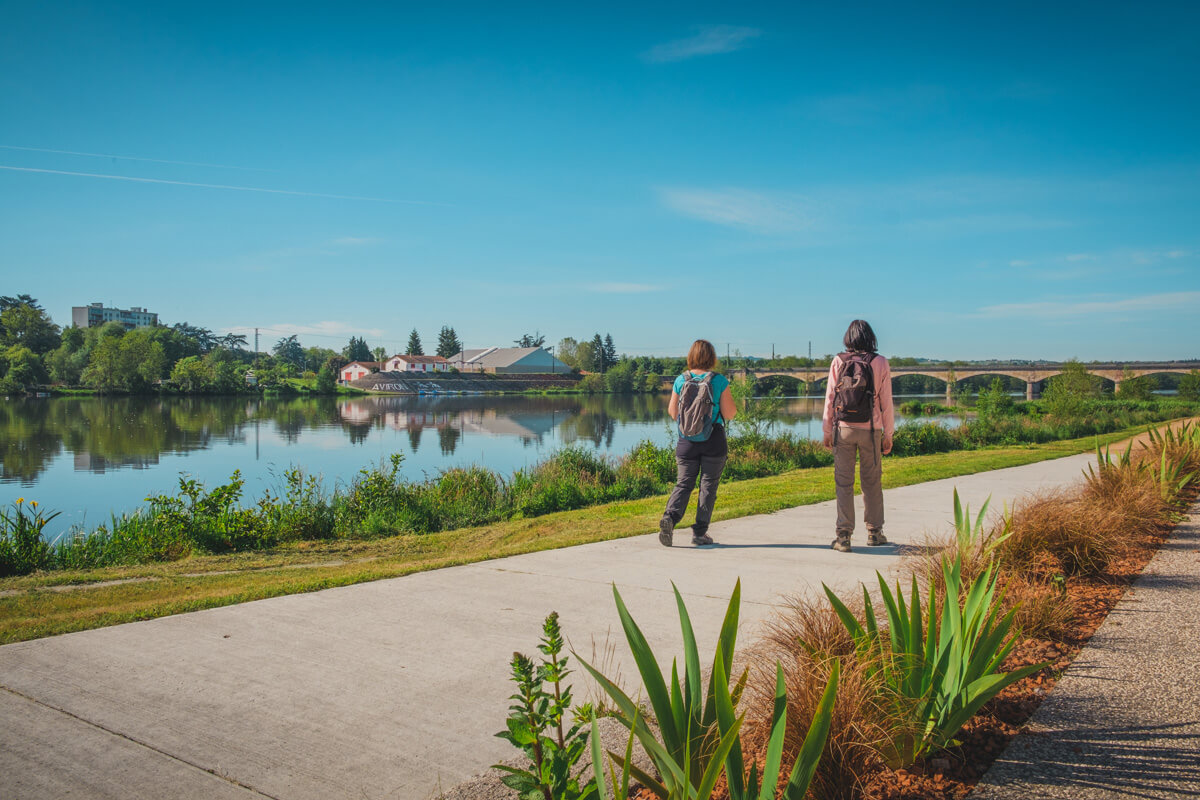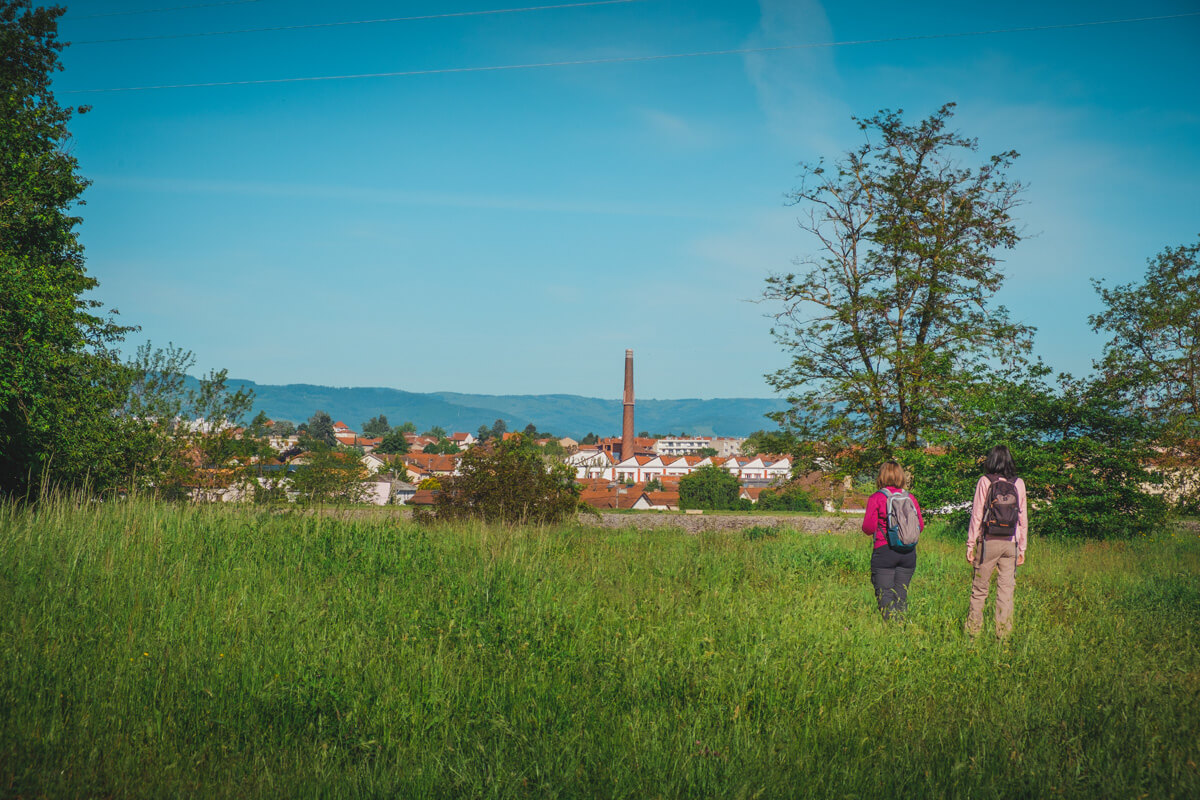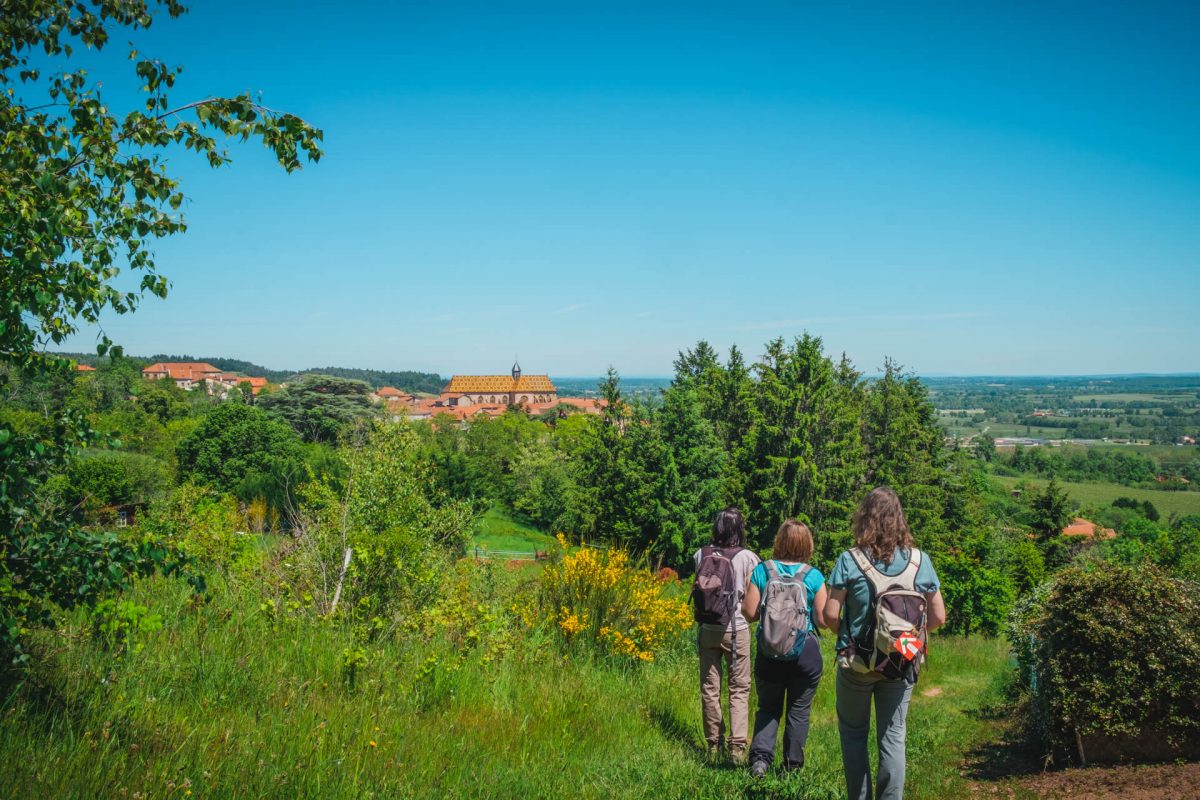Published 31 / 10 / 2022 Reading time: 5 min
Echoing Saint-Jacques-de-Compostelle, the Saint-Martin route follows in the footsteps of Saint-Martin, bishop of Tours in the 2500th century. This route connects the East to the West of Europe in XNUMX km. Between the mountain landscapes and the softness of the plains, you will discover the massif of the Monts de la Madeleine and part of the route crossing the Roannais. Ludivine Damian Farjot, animator and local relay of the European Cultural Center Saint-Martin-de-Tours, shares with us what you need to know and visit on this route!
The Saint-Martin route crosses Roanne and its countryside
On the Roanne-Vichy axis, this great mid-mountain hike begins on the banks of the Loire, at Roanne, a town located at the foot of the Madeleine mountains. The Loire River thus becomes the cord that connects Roannais to Touraine.
![Les bords de Loire à Roanne sur le chemin de la Via Sancti Martini]()
© Clovis Huet / RT ![Parc des Varennes au Coteau / Roanne sur le chemin de la Via Sancti Martini au coeur du village de Le Coteau]()
Varennes Park in Roanne © Clovis Huet / RT
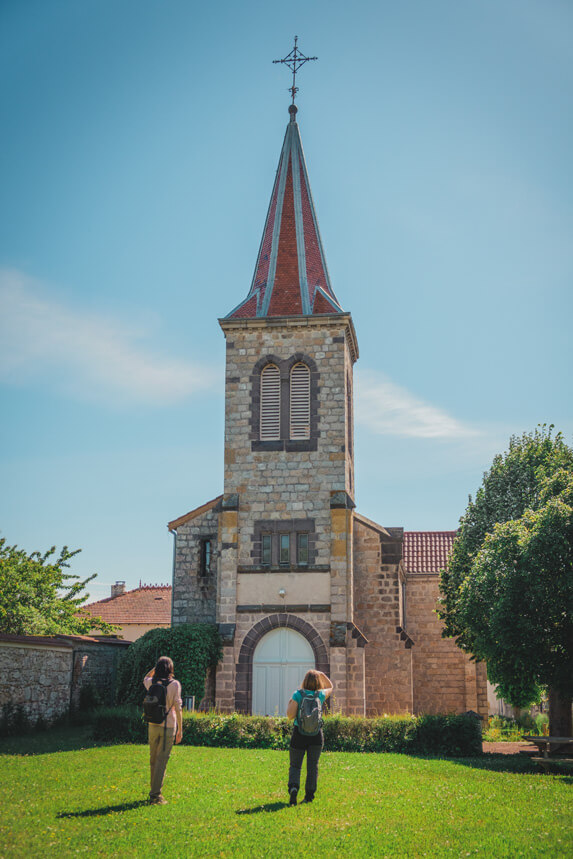
In Pouilly-les-Nonains, we discover the hamlet of Saint-Martin-de-Boisy sheltering the church of the same name. For the little anecdote, it takes its name from an old monastery under the patronage of Saint-Martin. Formerly very present in the Roannais, several legends still circulate about this man who was a soldier, monk, bishop, saint. Leaving this town, walkers roam the countryside. There can be farms of Charolais cows, typical of the region. Little by little, the view takes shape on the massif of the Monts de la Madeleine as well as the highlight of the finish. Appreciated for its cheeses, a stop at the Boisy Farm imposes itself. Other local products are on sale on site.
The Roannaise Coast and its Villages of Character
Change of landscapes, we leave the meadows for the vineyards arriving at Saint-Haon-le-Chatel, where are beginning to appear areas where you can taste the Côte Roannaise AOC wine and meet the winegrowers. The way of Saint-Martin takes us through the small streets of this medieval village, labeled Village of Character. Several possible breaks for the hiker! A visit to a craftsman or to an exhibition space at the Castel des Arts where you get to know the territory in a different way through painting, photography or sculpture.
![Arrivée dans le village de Saint-Haon-le-Châtel]()
Arrival in the village of Saint-Haon-le-Châtel © Clovis Huet / RT ![Balisage sur la Via Sancti Martini du côté de Roannais Agglomération (la voie Saint-Martin)]()
© Clovis Huet / RT ![]()
In the alleys of the village © Clovis Huet / RT ![Vue sur le prieuré d'Ambierle sur la Via Sancti Martini]()
View of the Priory of Ambierle on the Saint-Martin Way © Clovis Huet / RT

DID YOU KNOW ?
The path continues along the ramparts to reach Saint-Haon-le-Vieux. There are symbolic stones of Saint-Martin. A famous megalithic place. It is said that in the nineteenthrd century, on the occasion of pilgrimages in particular, families brought rickety children or children with difficulty in moving to ask for their healing. Some would have regained the ability to walk, according to the statements.
Then we head to Ambierle, another Village of Character. When you get closer, the Saint-Martin church imposes itself with its Gothic style and its flamboyant roof with multicolored glazed tiles. In autumn, the building is even more beautiful since it mixes with the colors of the vines with shades of red, orange and yellow. You can enjoy a stop in the courtyard of the cloister of the priory which once surrounded this church. You can access it either through the church or through the Maison de Pays which houses many local products, arts and crafts. To learn more about the daily life and traditions of Roannais and Forez in the XNUMXe and XXe centuries, the Alice Taverne museum also opens its doors to visitors.
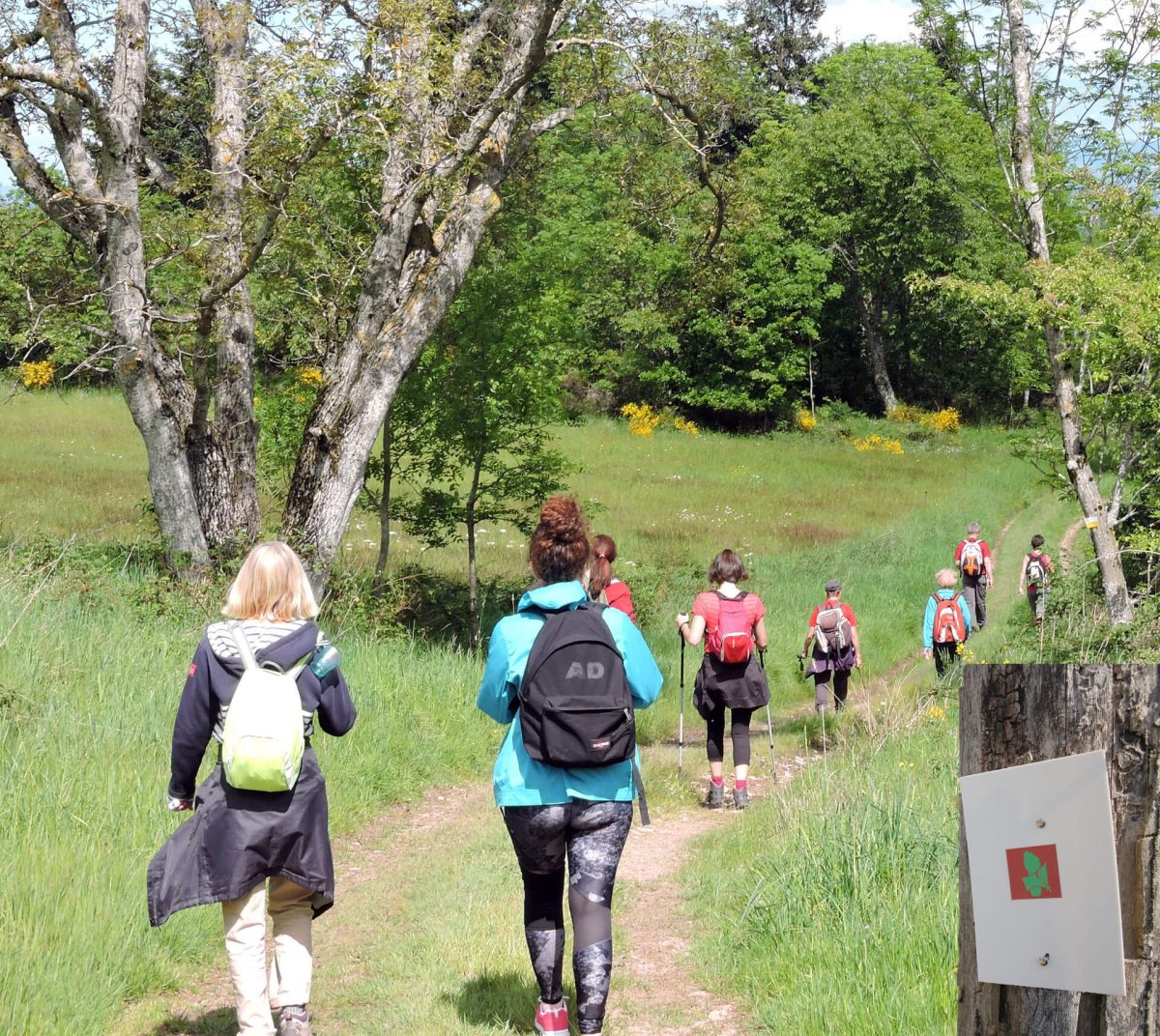
The Monts de la Madeleine and its forests
Finally, after passing by the Madone which offers a breathtaking view of the Roannaise plain, we reach the hamlet of Les Biefs in Saint-Bonnet-des-Quarts, which after the effort offers comfort.
The Saint-Martin way in 4 points :
- Accessible from Roanne, Vichy and Saint-Jodard stations,
- 10 municipalities crossed,
- From 300 meters to more than 1000 meters above sea level,
- On the route, 5 points where you can have your pilgrim's notebook stamped.
At this stage, the elevation is the most important. We go from 500 meters to 930 meters, which introduces a change of landscape. After the meadows and the vineyard, the decor consists of forests of oaks, chestnuts and beeches. On the way, the pilgrims come across tortuous beech trees which, in the past, were worked by man and more particularly the breeders who used them as a barrier to fence their animals in the meadows. Subsequently, the fir forests appear and bring the final note to the itinerary in the Roannais. The path then continues in the department of Allier.



